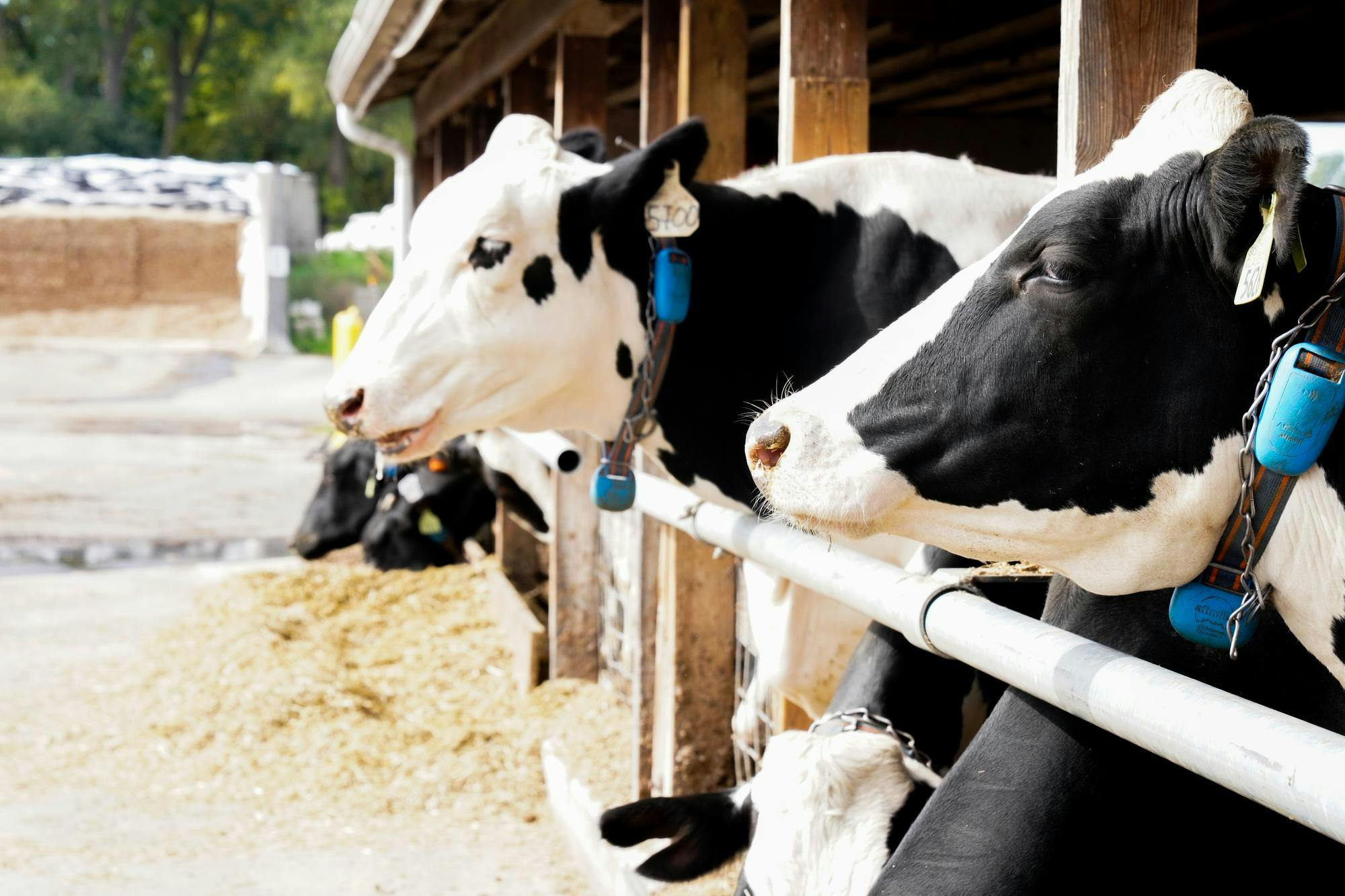Michigan State University’s Dairy Cattle Teaching and Research Center has a new machine for its cows that could help farmers fight climate change worldwide.
The machine, which dispenses treats for cows and analyzes their output, is part of an ongoing climate change project led by MSU animal science professor Dr. Mike Vandehaar.
The project aims to discover how different types of cattle feed affect the amount of methane cows produce.
Methane acts as a greenhouse gas when released into the atmosphere, contributing to the planet’s rising temperatures. As a greenhouse gas, methane is 25 times more potent than carbon dioxide, according to the Environmental Protection Agency.
Vandehaar’s project is a step toward reducing the environmental footprint of dairy cows.
"People don't eat dairy because they believe it's bad for the environment," Vandehaar said, "But most people do like ice cream. I don't want you to feel ... guilty when (you) eat it."
The machine enabling Vandehaar’s research is about the size of a large wardrobe and has an opening for cows to place their heads. Once their heads are in, the machine dispenses molasses pellets — treats for the cows. As the cows eat, the machine analyzes the amount of methane they burp out.
In Vandehaar’s upcoming study, cows will be fed supplements containing fatty acids. Preliminary research shows these supplements could reduce cow methane emissions by about 20 percent, he said.
"We want to know if some fatty acids are more effective than others," Vandehaar said.
Vanderhaar said methane from other parts of a dairy farm operation can be turned into a fuel source. The center has another machine, called a digester, that captures methane emitted from fermenting manure and other organic waste.
Solving these environmental problems is a small but important step for climate action, he said.
Cows account for about 11% of greenhouse gas emissions, and only 20% of those cows are used on dairy farms, according to the Food and Agriculture Organization of the United Nations.
Vandehaar’s other projects have aimed to reduce food waste with “leftover feed," or cattle feed made from the leftovers of plant harvests.
Leftover feed is made from high-fiber parts of plants that would otherwise go to waste–such as unused cotton seeds–Vandehaar said, which cows can eat.
"When we grow cotton for clothing, the seed is left over," Vandehaar said. "It's not of any value to humans because it's high in some toxins that we wouldn't want to eat."
Vandehaar said the diet of a typical Michigan cow consists of 30 percent leftover feed.
“If you read a lot that cows are terrible for the environment, I’m here to tell you they’re not,” he said.
Cows eating leftover feed produce twice as much food as they’re given, Vandehaar said. At that rate, he said, dairy farms can use their space more efficiently than crop farming.
Dairy Research Center Farm Manager Jim Good said future research will be aided by the installation of new dairy and greenhouse facilities.
The updates are expected to be completed by 2026 and will offer improved technology and safety compared to the current 60-year-old center.
Support student media!
Please consider donating to The State News and help fund the future of journalism.
Vandehaar said the facilities may also introduce additional methane analyzers.
Graduate research assistant Morgan Mills assists Vandehaar with the methane study. Mills said having more machines in the future could accelerate their research significantly.
Mills said methane collection currently takes eight minutes per cow. With an ideal sample of about 40 cows, she said, the process takes up to five hours.
"Personally, I would like another (machine), but I know it's expensive," Mills said.
Volunteers like Mills not only work on the research project but also help at the dairy farm to take care of its 200 cows.
“Everyone here loves the cows," Mills said. "We are very affectionate towards them, and everything we do out here is to improve the industry."
Working on the farm isn’t easy, she said, but the animals make it worth it.
“(Shifts) are long, I’ve been out here for 13 hours at a time,” Mills said. “(But) the cows can be pretty cuddly. I probably have 100 pictures of them.”
Discussion
Share and discuss “MSU Dairy Farm uses cow burps to fight climate change ” on social media.






